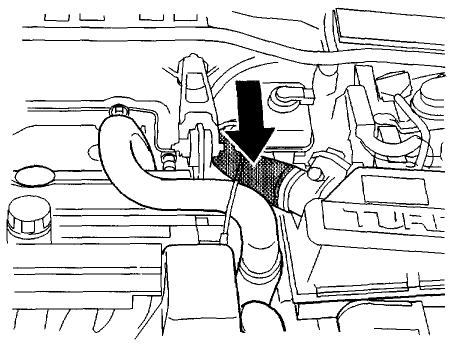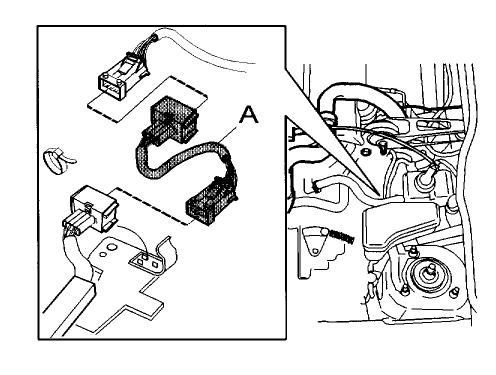New routing has been developed for oxygen sensor wiring on 1997-’98 Volvo 850 models, S70/V70/C70, to prevent contamination from reaching the probe’s reference air. If one oxygen sensor is replaced, the new adapter wiring must be installed for both sensors.
Service Procedure: 1. For turbocharged engines, remove the fresh air intake hose between the air cleaner (ACL) housing and the turbocharger (TC). (See Figure 1) For naturally aspirated engines, remove the preheating hose.
1. For turbocharged engines, remove the fresh air intake hose between the air cleaner (ACL) housing and the turbocharger (TC). (See Figure 1) For naturally aspirated engines, remove the preheating hose.
2. Remove the front heated O2 sensor. Use tool no. 9995543.
3. Install a new heated O2 sensor.
Note: For AWD vehicles, replace the front O2 sensor from the engine compartment.
Note: The illustrations show only one of the adapter wiring systems, but the same method applies to both front and rear O2 sensor. 4. When replacing the heated O2 sensor adapter wiring (See A, Figure 2), which is included in the kit, it should be installed between the existing cable harness and the heated O2 sensor.
4. When replacing the heated O2 sensor adapter wiring (See A, Figure 2), which is included in the kit, it should be installed between the existing cable harness and the heated O2 sensor.
5. Form the adapter wiring into a loop. Install a tie strap.
Note: Ensure that the ends of the adapter wiring protective sheath point downward so that moisture does not gather in the protective sheath. This illustration displays a late version of the heated O2 sensor cable bracket.
6. On AWD vehicles, the cable for the front heated O2 sensor should be routed over the fresh air intake hose.
7. For turbocharged engines, install the fresh air intake hose. On naturally aspirated engines, install the preheating hose.
8. Erase any DTCs.
9. Test-drive the vehicle and check that no new DTCs have been stored.
For additional tech tips, visit www.alldata.com.
Technical service bulletin courtesy of ALLDATA.











